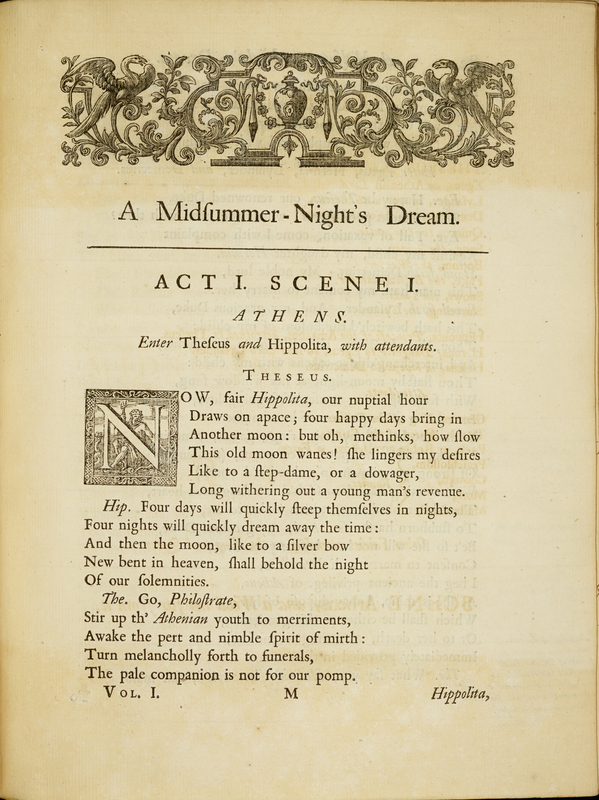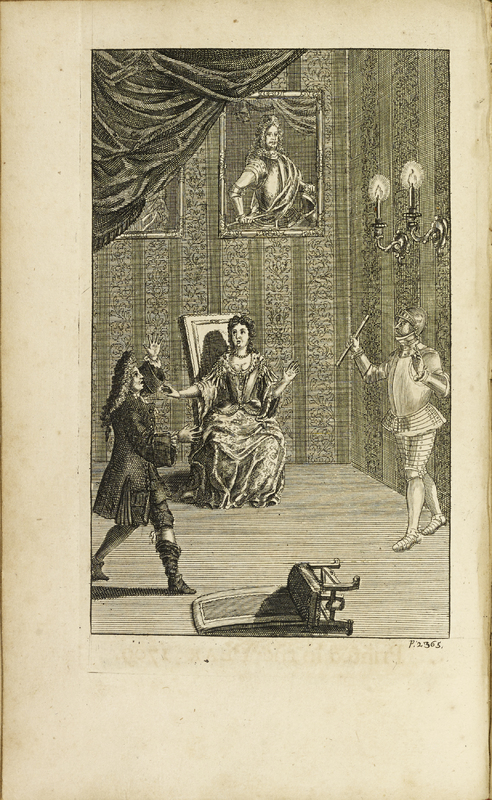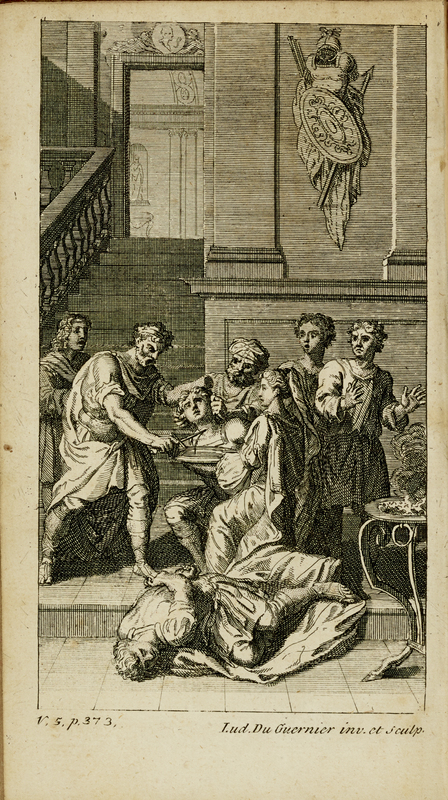Illustrating Shakespeare
Nicholas Rowe (1674-1718) was the first major editor of the complete works of Shakespeare. While Rowe mainly relied on the Fourth Folio, he also used late reprints of quartos for the editions of Hamlet and Othello. In fact, he was the first scholar to use quarto readings to make emendations in the text of the Folio. In brief, he authored two editions published by Jacob Tonson in 1709 and 1714. They are richly illustrated with copperplate engravings, each of them located before the title-page of each play. Many of these illustrations provide us with an extraordinary window into the costumes and atmosphere of how a particular scene was actually staged. For instance, see the plate with Hamlet and his mother playing the closet scene: Hamlet has overthrown his chair as he leaps up at the apparition of his father, a theatrical effect probably devised by the great actor Thomas Betterton, who assisted Rowe with his edition. Thomas Hanmer (1677-1746) published his edition of Shakespeare's works in 1740. With the exception of six plates, all the illustrations of this six-volume edition were designed by Francis Hayman. In the examples on display we can appreciate how Hayman brought to the realm of book illustration the aesthetic conventions of the rococo style: the interiors replicate elegant rooms of the period, where a comedy or tragedy of manners could take place. For instance, in a charming Georgian room, we can see how Mistress Page and Mistress Ford put a clean-shaven Falstaff into the basket.

Shakespeare & The Restoration

Editing Shakespeare






